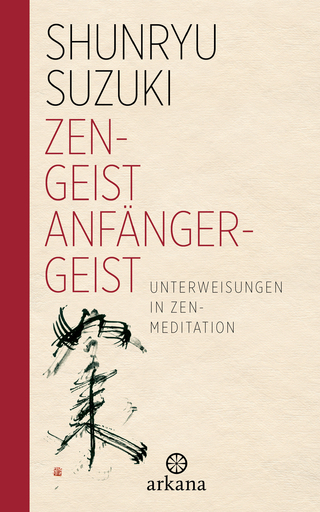
Expository Commentary on the Vimalakirti Sutra
Seiten
2012
Numata Center for Buddhist Translation & Research. (Verlag)
978-1-886439-44-3 (ISBN)
Numata Center for Buddhist Translation & Research. (Verlag)
978-1-886439-44-3 (ISBN)
A translation of the Yuimagyo-gisho, a three-fascicle commentary on Kumarajiva's translation of the Vimalakirtinirdesa-sutra. Together with commentaries on the Lotus Sutra and the Srimaladevi-sutra, it is known as one of the ""Three Commentaries"" (Sangyo-gisho) attributed to Shotoku Taishi.
The Expository Commentary on the Vimalakirti Sutra is a translation of the Yuimagyo-gisho, a three-fascicle commentary on Kumarajiva’s translation of the Vimalakirtinirdesa-sutra. Together with commentaries on the Lotus Sutra and the Srimaladevi-sutra, it is known as one of the “Three Commentaries” (Sangyo-gisho) attributed to Shotoku Taishi. While questions about Shotoku’s authorship still remain, this text has played significant role in the history of Japanese Buddhism. The Vimalakirti-sutra’s dramatic narrative of an awakened merchant prince, long popular in China as a model for the sage-ruler, had obvious appeal to Japanese rulers in the sixth–seventh centuries as well, an era that marks the beginning of the Japanese state. Adopting Buddhism as the state religion, initiating diplomatic relations with Korea and China, and integrating the superior technologies of the continent required great changes in the legitimization of rule and the structure of virtually every aspect of Japanese life. Shotoku and his family have long been seen as central pillars of this “internationalization” of Japan, and the connection between The Commentary and Shotoku Taishi assured its importance and influence to this day.
The Expository Commentary on the Vimalakirti Sutra is a translation of the Yuimagyo-gisho, a three-fascicle commentary on Kumarajiva’s translation of the Vimalakirtinirdesa-sutra. Together with commentaries on the Lotus Sutra and the Srimaladevi-sutra, it is known as one of the “Three Commentaries” (Sangyo-gisho) attributed to Shotoku Taishi. While questions about Shotoku’s authorship still remain, this text has played significant role in the history of Japanese Buddhism. The Vimalakirti-sutra’s dramatic narrative of an awakened merchant prince, long popular in China as a model for the sage-ruler, had obvious appeal to Japanese rulers in the sixth–seventh centuries as well, an era that marks the beginning of the Japanese state. Adopting Buddhism as the state religion, initiating diplomatic relations with Korea and China, and integrating the superior technologies of the continent required great changes in the legitimization of rule and the structure of virtually every aspect of Japanese life. Shotoku and his family have long been seen as central pillars of this “internationalization” of Japan, and the connection between The Commentary and Shotoku Taishi assured its importance and influence to this day.
| Erscheinungsdatum | 29.09.2017 |
|---|---|
| Übersetzer | Jamie Hubbard |
| Verlagsort | Berkeley |
| Sprache | englisch |
| Maße | 152 x 229 mm |
| Themenwelt | Geisteswissenschaften ► Religion / Theologie ► Buddhismus |
| ISBN-10 | 1-886439-44-3 / 1886439443 |
| ISBN-13 | 978-1-886439-44-3 / 9781886439443 |
| Zustand | Neuware |
| Haben Sie eine Frage zum Produkt? |
Mehr entdecken
aus dem Bereich
aus dem Bereich
Philosophische Betrachtungen
Buch | Softcover (2024)
Aufbau TB (Verlag)
12,00 €
Unterweisungen in Zen-Meditation
Buch | Hardcover (2024)
Arkana (Verlag)
20,00 €


